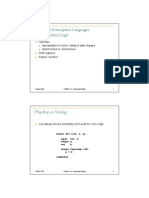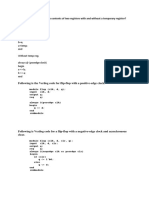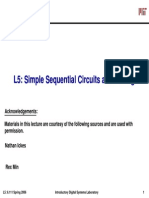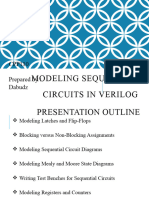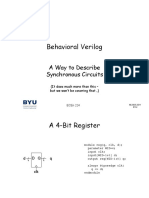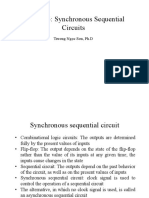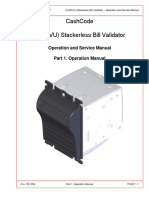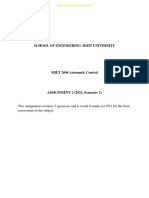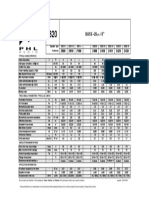0% found this document useful (0 votes)
321 views26 pagesChapter 4 - HDL Modelling of Sequential Logic Circuit
The document discusses sequential logic design using Verilog. It covers latches and flip-flops as basic one-bit storage elements used in sequential logic. It also discusses edge-triggered flip-flops, D latches, signal edge detection in Verilog, blocking and non-blocking assignments, and provides examples of edge-triggered flip-flop modules, registers, and shift registers.
Uploaded by
NG WEN CHI STUDENTCopyright
© © All Rights Reserved
We take content rights seriously. If you suspect this is your content, claim it here.
Available Formats
Download as PDF, TXT or read online on Scribd
0% found this document useful (0 votes)
321 views26 pagesChapter 4 - HDL Modelling of Sequential Logic Circuit
The document discusses sequential logic design using Verilog. It covers latches and flip-flops as basic one-bit storage elements used in sequential logic. It also discusses edge-triggered flip-flops, D latches, signal edge detection in Verilog, blocking and non-blocking assignments, and provides examples of edge-triggered flip-flop modules, registers, and shift registers.
Uploaded by
NG WEN CHI STUDENTCopyright
© © All Rights Reserved
We take content rights seriously. If you suspect this is your content, claim it here.
Available Formats
Download as PDF, TXT or read online on Scribd
/ 26





